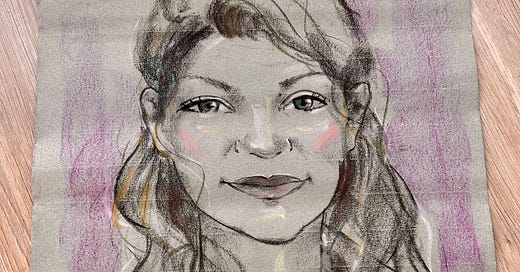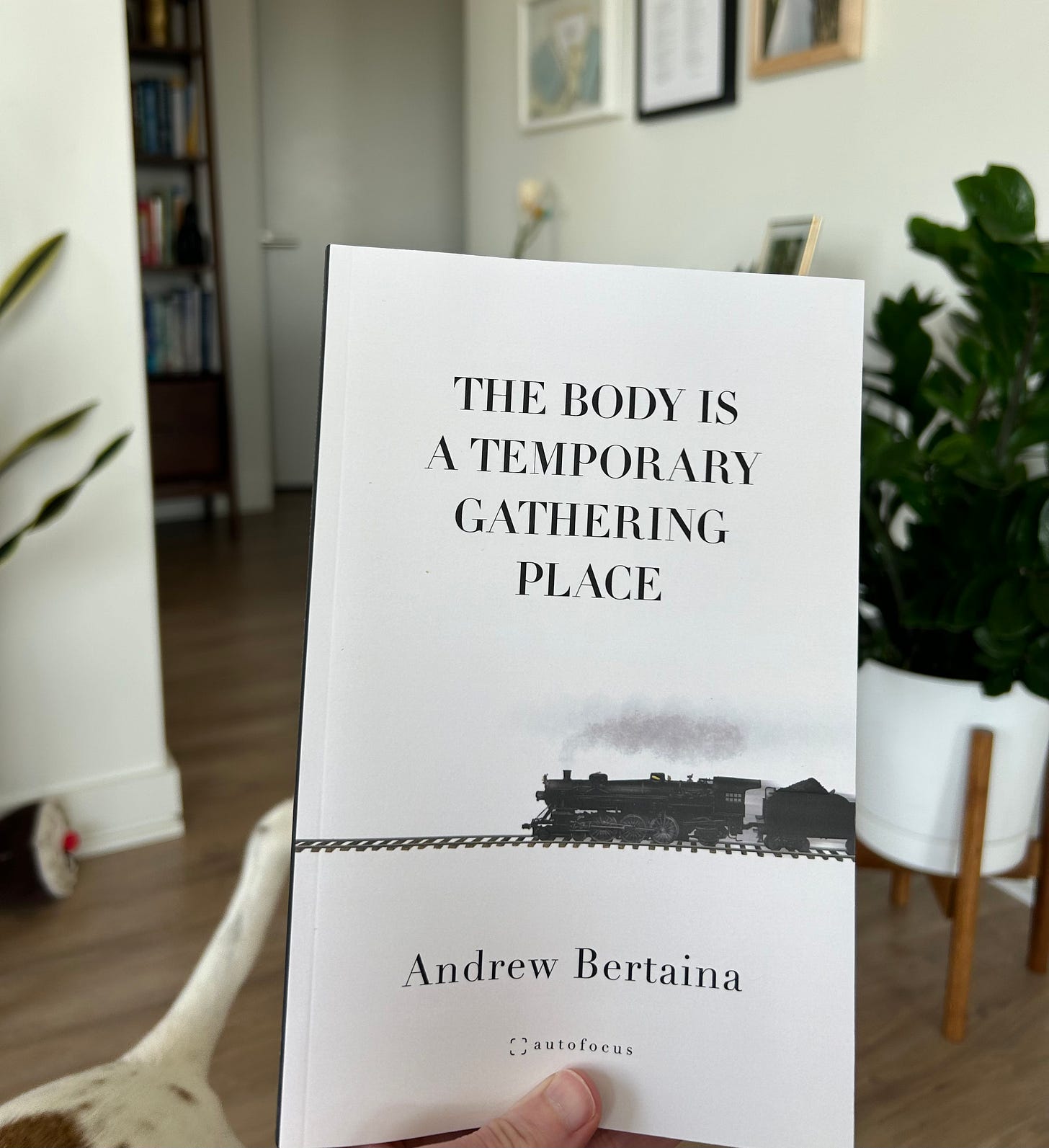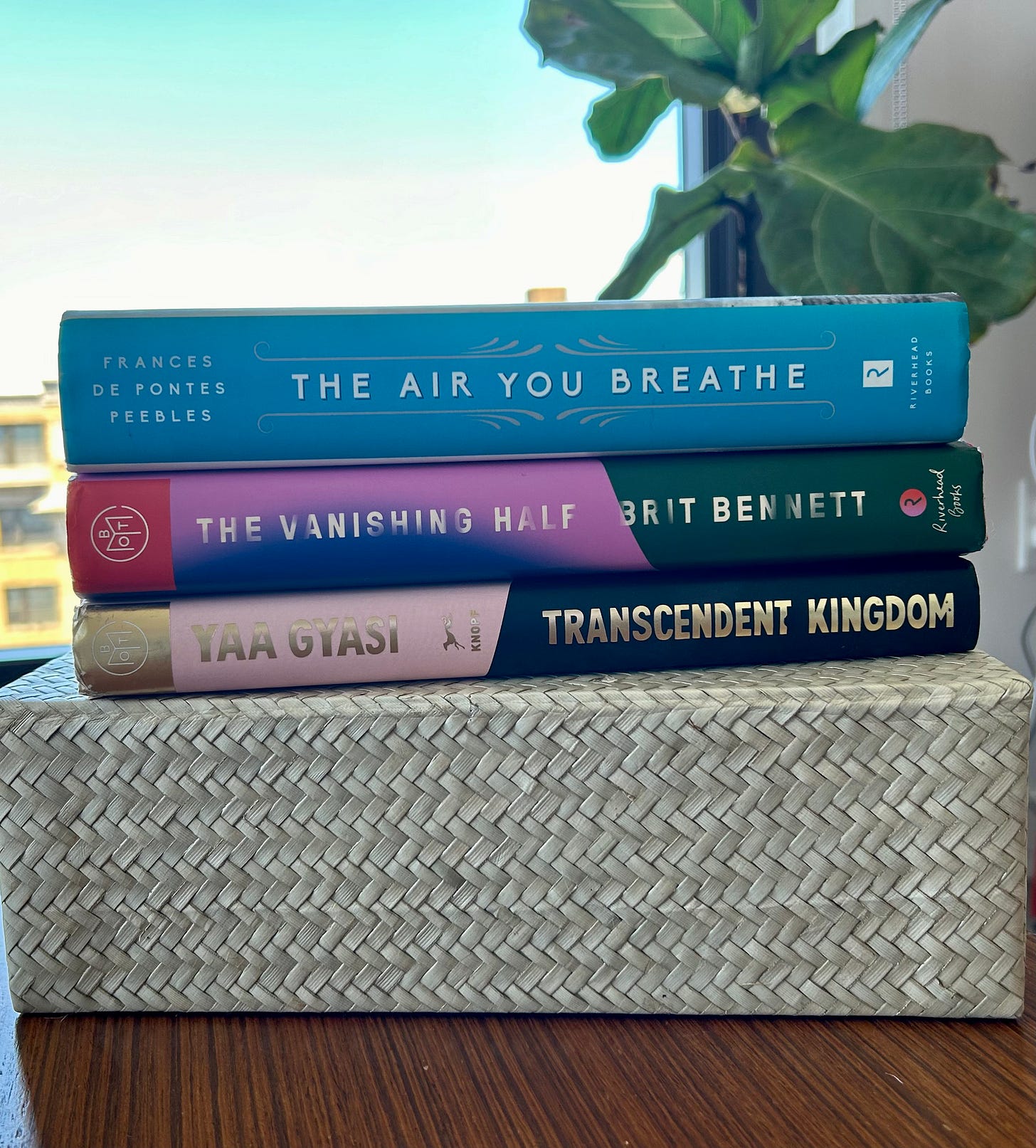writing, and reading, outside ourselves
on creating characters who feel real; inspiration, research, and all that fuels our writing
Fun update. A few weeks ago while I was dogsitting for my parents in suburban Maryland, I found this sketch of me by an artist in Montmartre from more than 10 years ago. Earlier this year, I wrote a substack post about mining the past and how our memories often show up in our creative work. This sketch is an artifact of my time living in France, which continues to inspire my writing. Most recently, it helped inspire this short story.
I’ve been thinking about this question of what inspires our art as I just took an amazing writing class through literary organization One Story. The course, “Crafting Characters with Care,” taught by author Carrie Moore, explored techniques for writing characters outside of one’s identity and background; effectively writing characters’ trauma; and creating complex secondary and minor characters.
All three of these areas can be challenging in their own ways, and this course illuminated some new techniques and ways to think about fiction.
Trauma and Backstory
A character’s trauma is in many ways their backstory. It’s something from a character’s past that had an indelible impact on them and drives their quest throughout a novel. Weaving in this backstory or trauma can be difficult because readers need to get to know a character first — and begin to like them or at least understand them —before the author starts exposing layers of their past traumas. After all, why would a reader care about the past of someone they barely know, and aren’t sure they like yet?
Writing trauma can also be tricky because good authors aim to show the impact that trauma has on a character while avoiding veering into melodrama or exploitation of painful histories. It’s a balancing act to share just enough of a character’s past to show how it informs their present. It’s also essential to reveal trauma and backstory slowly, and in a way that feels organic to readers.
Minor Characters
In the course, Carrie also covered minor and secondary characters and how to make them rounded, complicated people. I generally think I do well with writing secondary characters, those who appear throughout a novel or story and clearly have some of their own desires and motivations. However, I hadn’t given quite as much thought to the concept of minor characters. That is, characters who might appear in a scene or two, but don’t have a storyline that spans the whole novel. It was helpful to think about ways to go deeper into these characters and make them more than just props to the protagonist’s journey.
Writing Outside Ourselves
Lastly, the course delved into techniques for writing characters outside of one’s identity. Honestly, this isn’t something I’ve experimented much with, for better or for worse, but I have some ideas to change this in future projects. Writing characters outside of one’s background has become a fraught topic in recent years, with plenty of accusations of “cultural appropriation” for authors who depict characters or cultures outside their identities.
So, it was refreshing to hear some arguments in Carrie’s class in favor of incorporating characters and perspectives outside our own. After all, if we want to depict the world truthfully through fiction, we must show the full and diverse cast of characters who inhabit our past, present, and future.
I was talking about this with a friend the other day, and he brought up an interesting point. If authors are limited to only writing characters “like” ourselves, then all stories and novels would take on a memoir-esque, auto-fiction quality. Talk about limits to creativity and storytelling. Isn’t that the point of fiction, after all — To glimpse into lives outside our own? To experience the world from a new vantage point?
As a reader, I want to discover characters I can relate to and who make me feel seen, but I also want to explore other worlds, places, cultures, and ways of being. And, I think there’s a way to do both; most of my favorite books do.
Inspiration, Research, and Imagining
The book I wrote (and hope to one day publish) is, in some ways, informed by my lived experiences. One of its major settings is a middle-class Connecticut suburb, the type of neighborhood where I grew up, copied and pasted across a few different states and parts of the country. A largely white community with coveted top school districts, pristine lawns governed by neighborhood associations, involved parents, and high-achieving students.
But, it takes a turn far outside of my lived experience as my protagonist starts seeing psychic visions and begins to nurture this ability. I’ve done a lot of reading on psychics, and I’ve also done a lot of imagining as to how a person would experience and interact with their psychic visions. What would trigger a psychic vision for someone just developing them? How would memory and desire, fears and aspirations, collide to bring forth different types of visions? These are just a few questions that have been in the back of my mind while drafting this novel.
And, I’m excited to dive deeper into my research and exploration of the psychic. Next month, I’m going on my first-ever research trip. My husband and I are going to Cape Cod (where a pivotal scene at the end of my book takes place) and to Salem, Massachusetts, a mecca of all things witchy and psychic.
I look forward to sharing some of my notes, observations, and findings from the trip here on my Substack. I’m hopeful that it will add an additional layer of authenticity to several key scenes in my novel. And I want to acknowledge and thank the D.C. Commission on Arts and Humanities for their support and recognition of my work. The Fiction Fellowship they awarded me has helped me grow in my writing practice by doing cool things like taking the One Story class and going on this upcoming research trip.
Coming Up
My friend Andrew Bertaina just published his second book, an essay collection The Body is a Temporary Gathering Place, and next weekend, he’s hosting a book launch at his house. And (!)—at the launch party, my husband will make his musical debut on the D.C. arts scene with a bass clarinet performance. He’s been practicing a really cool piece, and I’m so excited for him to share it with the community of D.C. writers and artists.
I’m thrilled for Andrew as he’s bringing his essay collection into the world. What I’ve read so far have been gorgeous meditations on the passing of time, parenting, and the process of creating art. He has a gift for imbuing the smallest moments with meaning and beauty. I loved his first book, One Person Away From You, a collection of short stories that are so relatable and deeply human.
Book Recs
Lastly, I wanted to share a few of my favorite books that took me outside my lived experiences, expanded my worldview, and drew me deeply into the worlds of their characters.
The Vanishing Half, Brit Bennett. Follows the story of two light-skinned Black twins, and their daughters, whose lives take drastically different paths when one of them passes as a white woman. A propulsive read with luscious prose and a plot that keeps you turning the pages.
Transcendent Kingdom, Yaa Gyasa. A beautifully heartbreaking book that follows Ghanaian immigrant, Ghifty, a Ph.D. student studying the neurology of addition as she tries to make sense of her brother’s struggles with opioid addition.
The Air You Breathe, Frances De Pontes Peebles. This sweeping historical fiction novel spans Brazil’s sugar plantations of the 1930s, Rio de Janeiro, and the Golden Age of Hollywood in L.A. A coming-of-age story about music, love, and the complexities, and rivalry, of friendship.








